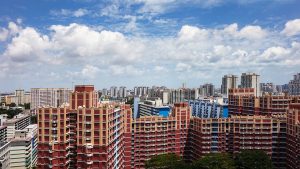HDB will consider exercising flexibility in administering the Ethnic Integration Policy quota for owners who are unable to sell flats
 The Minister for National Development, Lawrence Wong, assured homeowners affected by the Ethnic Integration Policy quota tat HDB will exercise flexibility in administering the policy for owners who face certain difficulties. The Minister gave this assurance in responding to a parliamentary question on financial aid for owners who are unable to sell flats due to the Ethnic Integration Policy.
The Minister for National Development, Lawrence Wong, assured homeowners affected by the Ethnic Integration Policy quota tat HDB will exercise flexibility in administering the policy for owners who face certain difficulties. The Minister gave this assurance in responding to a parliamentary question on financial aid for owners who are unable to sell flats due to the Ethnic Integration Policy.
In responding to the question of if “the Government will consider some form of financial aid to HDB owners who are unable to sell their flat due to the ethnic racial quota but need to sell their flat due to financial hardship,” Mr Wong responded saying:
“HDB’s experience is that most owners are able to sell their flats in the open market from eligible ethic groups, but some may need more time to do so. Hence for those who face difficulties, HDB will, in the first instance, grant them an extension of time to market and sell their flats. Beyond that, if they face any financial issues, HDB will also look into reducing or deferring the monthly mortgage instalments temporarily to ease their cash flow. For those with exceptional circumstances, HDB will consider exercising flexibility in administering the Ethnic Integration Policy (EIP).
More generally, households in financial hardship can avail themselves to the broader suite of government assistance schemes, and community schemes, and consider other measures to put their finances on a more stable footing. So HDB will refer them to the Social Service Office for financial counselling and for other means of financial support.”
When buying an HDB resale flat, buyers need to ensure they are within the Ethnic Integration Policy proportion for the block/ neighbourhood, and if applicable, the Singapore Permanent Resident (SPR) quota as well.
Table of Contents
How the EIP and SPR work
- You are within the block/ neighbourhood’s limits in terms of your ethnic group and the SPR quota,
- You and the seller are of the same ethnic group and household citizenship type
About the Ethnic Integration Policy
Once an ethnicity is chosen for the household, it will remain the same when the flat owners subsequently sell their flat on the open market.
About the SPR quota
The Ethnic Integration Policy was implemented on 1 March 1989 to promote racial integration and harmony in Housing and Development Board (HDB) estates.
Then Minister for National Development S. Dhanabalan first highlighted the emergence of ethnic enclaves in HDB estates in his speech to community leaders at a New Year’s gathering held at the People’s Association auditorium on 6 January 1989. To illustrate his point, he drew on the examples of neighbourhoods in Bedok and Tampines housing estates where Malay households made up more than 30 percent of the estate population, and Hougang where more than 90 percent of the households are Chinese. In a bid to address the growing issue of communal clustering, Dhanabalan announced that the government would adopt policies to maintain the ethnic balance as a means to foster social and racial cohesion.
Dhanabalan officially introduced the Ethnic Integration Policy in parliament on 16 February 1989. To ensure a better racial mix in HDB estates, the government established ethnic quotas for HDB neighbourhoods and blocks. The permissible proportion of flats in each neighbourhood for Malays was 22 percent while the permissible proportion of flats in each block was 25 percent. For Chinese, the permissible proportions were 84 percent and 87 percent respectively, and for Indians and other minority groups, the figures were reduced to 10 percent and 13 percent respectively.






